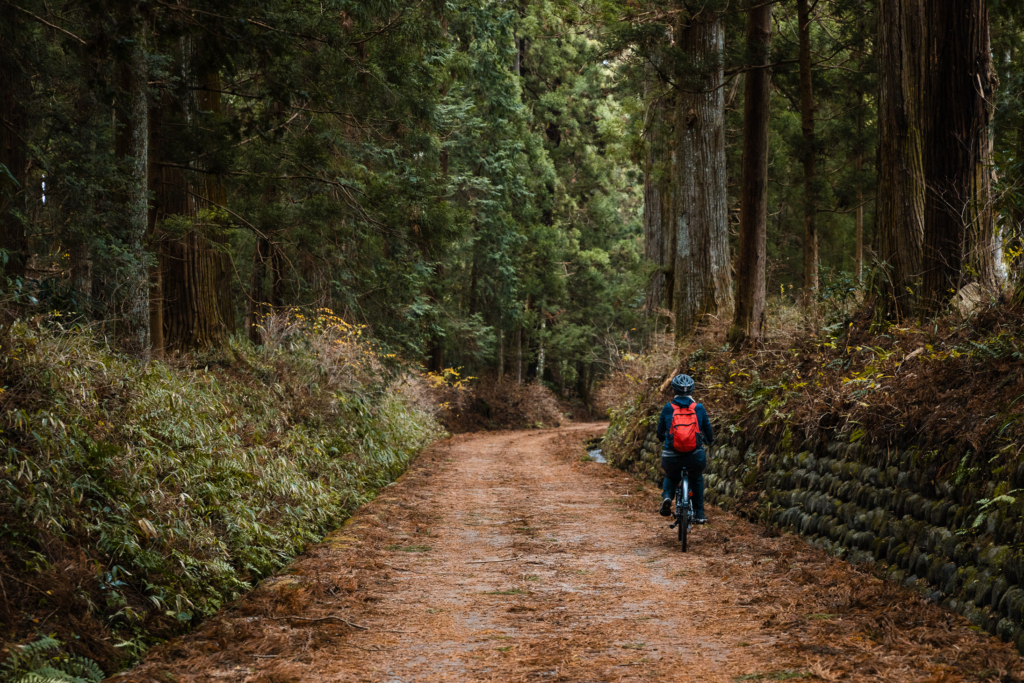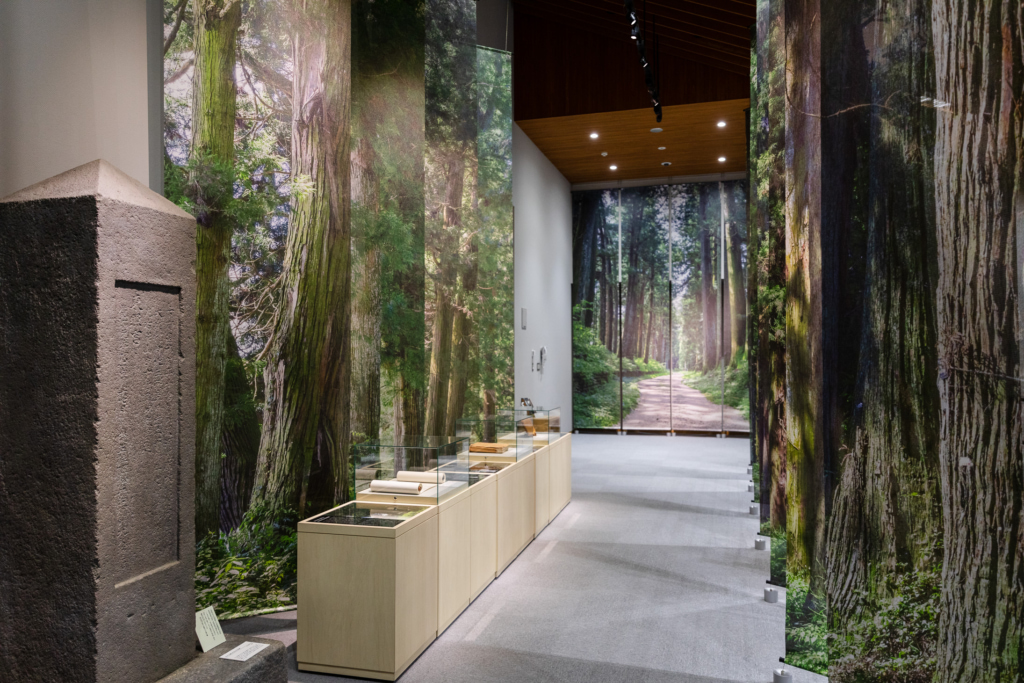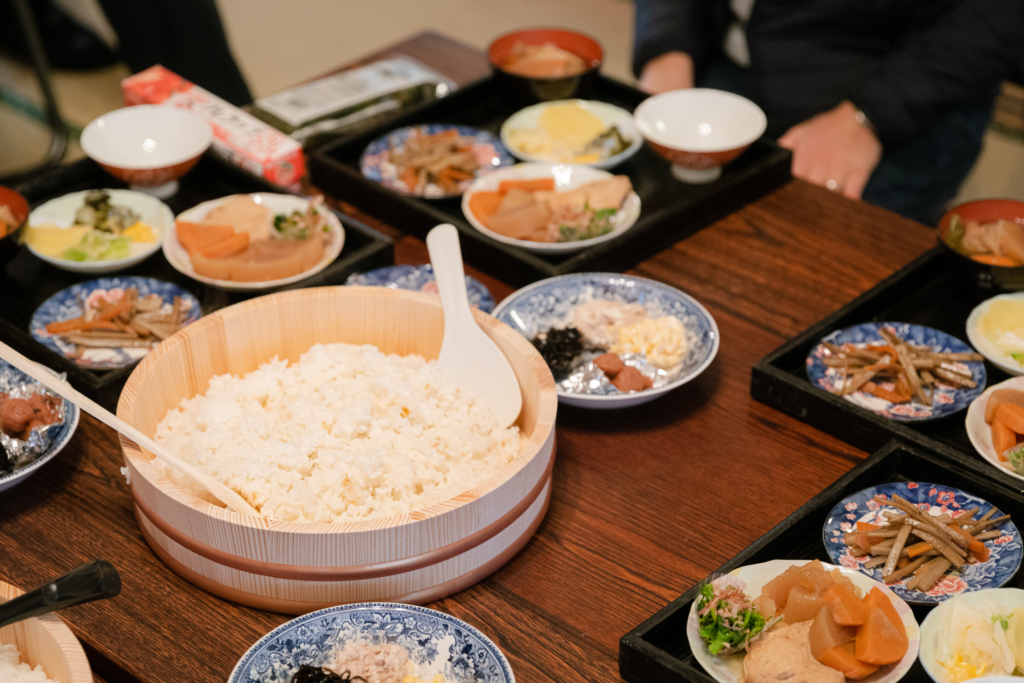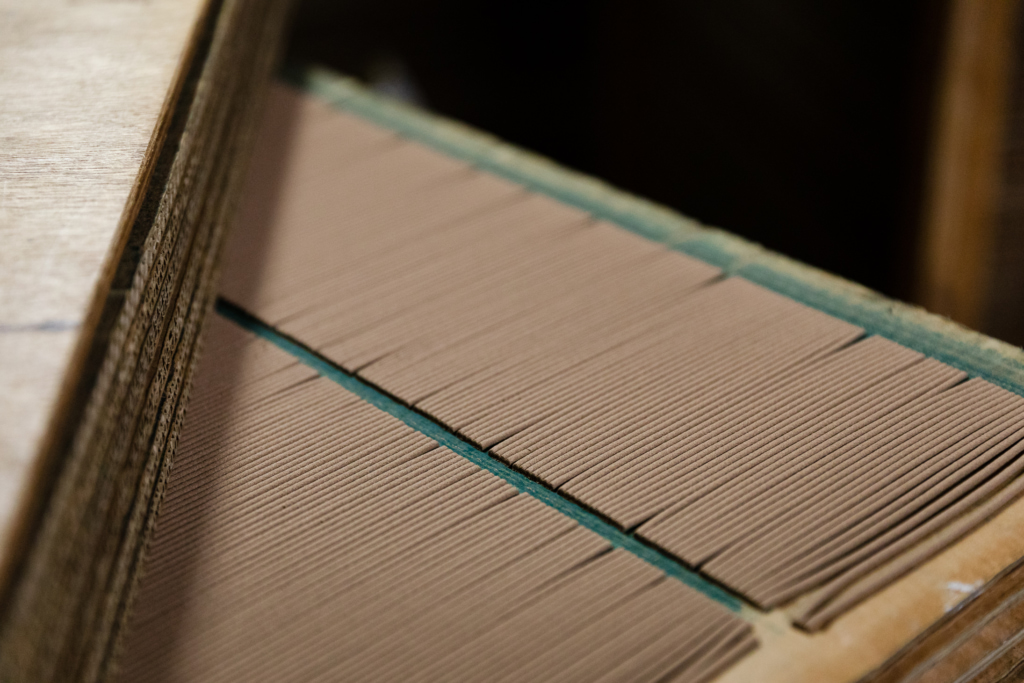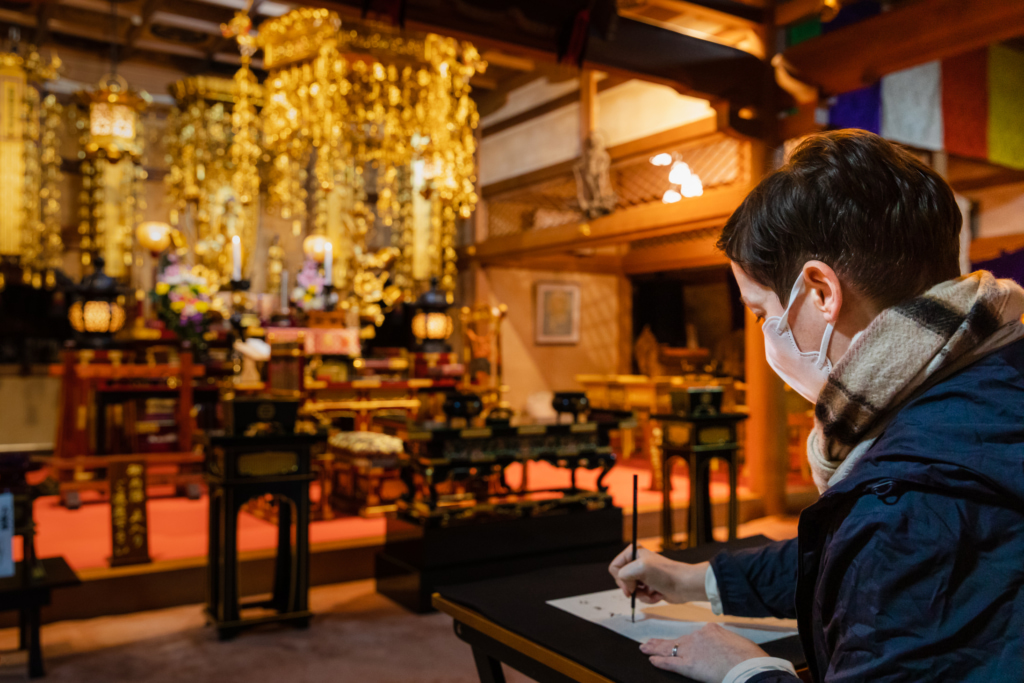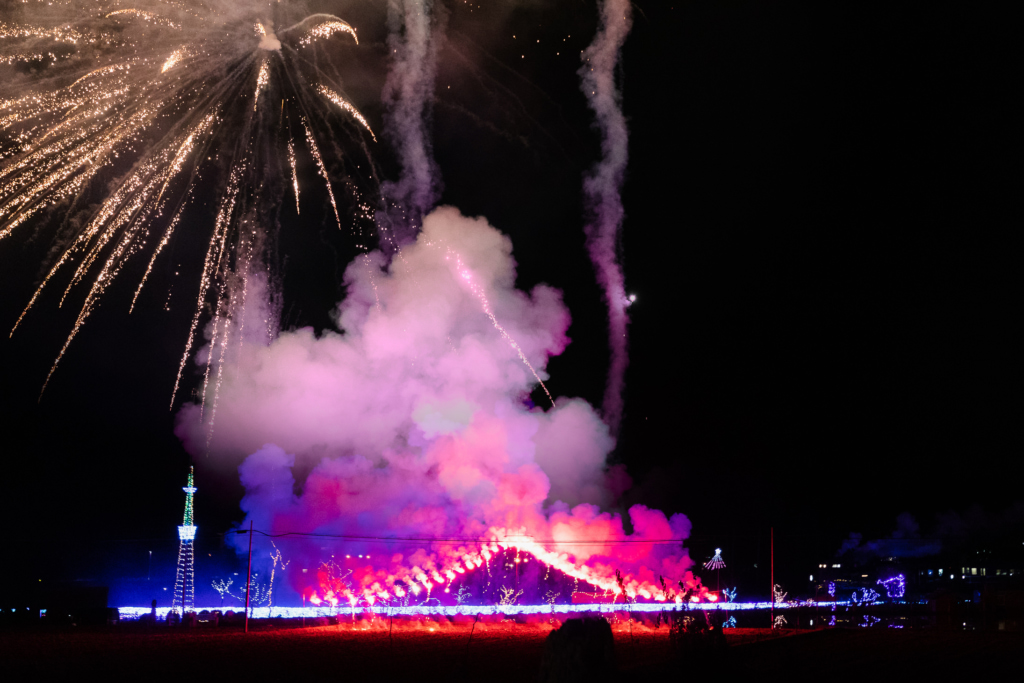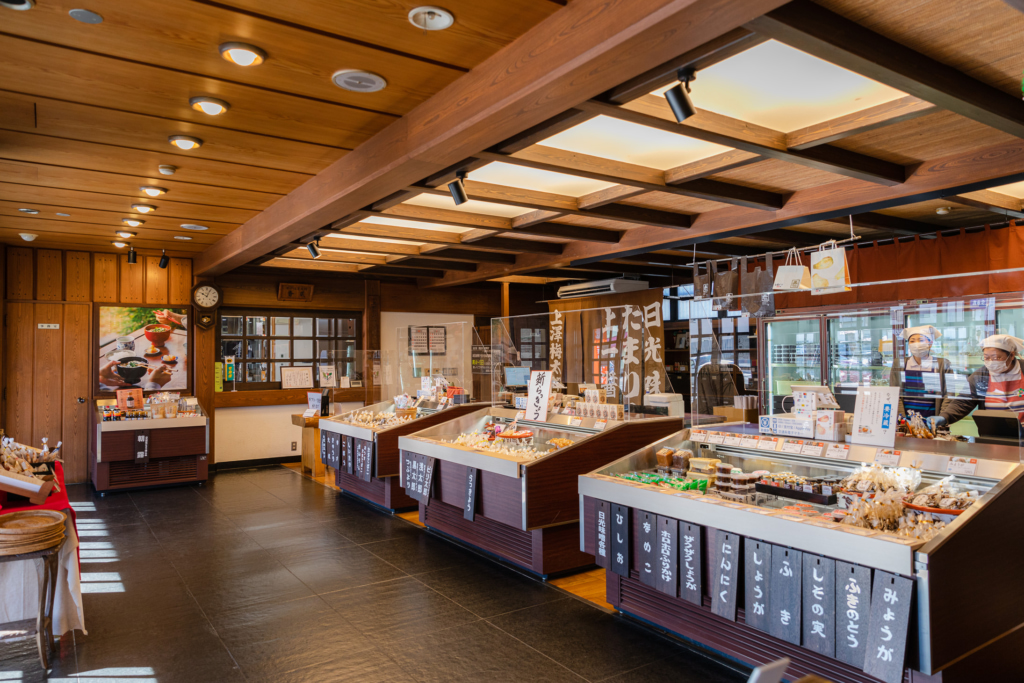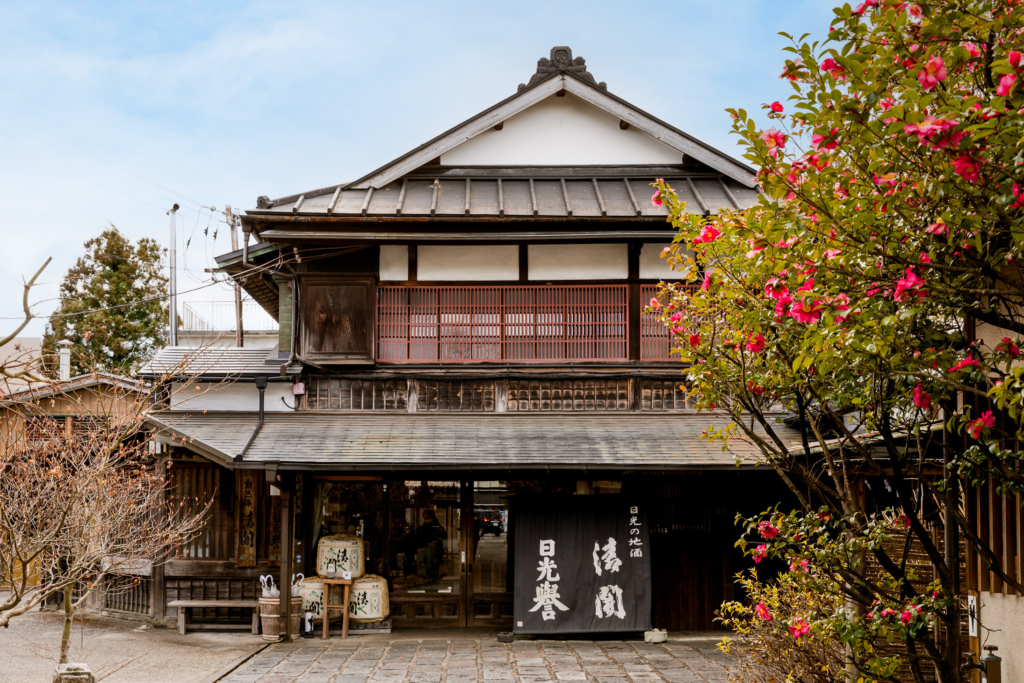The historical figure usually associated with Nikko is Tokugawa Ieyasu, the powerful shogun whose lavish mausoleum at Toshogu Shrine is the city’s preeminent tourist attraction. Beyond that cluster of religious sites, however, is another Nikko: a rural satoyama heartland in the hills between the Daiya and Kinugawa rivers.
In a new bicycle tour organized by the Nikko City Tourism Association, travelers looking for off-the-beaten-path destinations can experience the charms and beauty of satoyama.
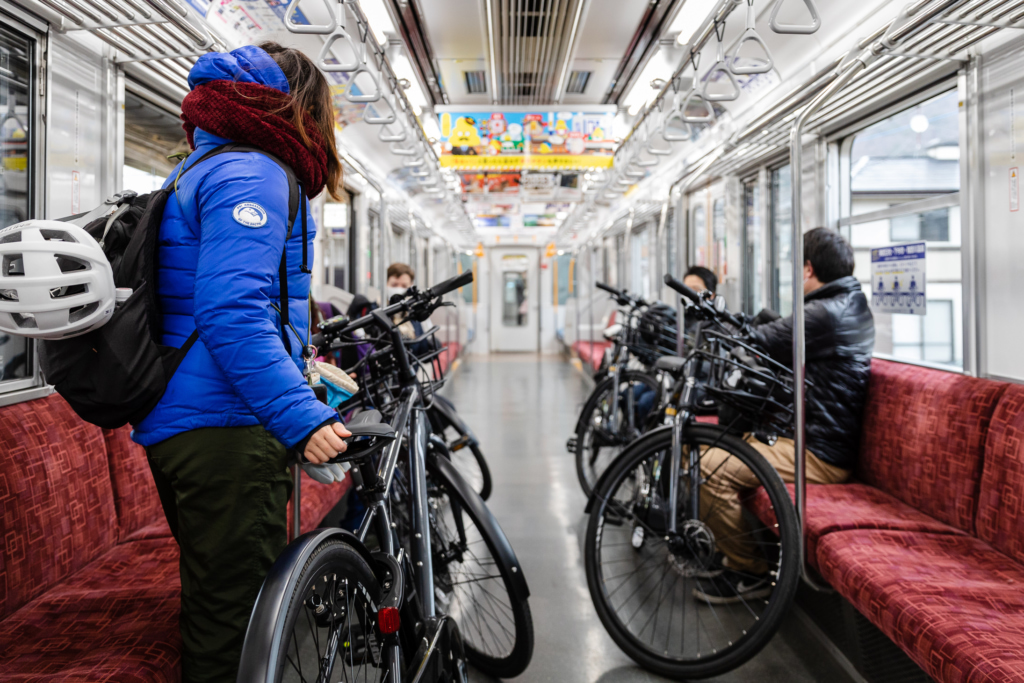
Tobu Railway’s Cycle Train
The tour kicks off at Kinugawa Onsen Station, where our English-speaking guides collect us and go over how to use the e-bikes. From there, we take Tobu Railway’s bike-friendly Cycle Train, which allows riders to bring along a bicycle with no extra charge, to picturesque Shimo-Imaichi Station.
Into the Woods of Nikko
We first bike out to a stretch of road flanked by towering cedars, also known as Suginami Cedar Avenue. Split into three sections totaling just over 37 kilometers, this road was a part of a pilgrimage route from Tokyo to Toshogu Shrine. In the early 17th century, daimyo Matsudaira Masatsuna began donating seedlings to be planted along the route to protect pilgrims from the elements. At one point, an estimated 200,000 cedars lined the road. Today, 12,000 cedars still keep vigil and a sense of their 400-year-long history is palatably present as we pass under their bushy boughs. In 1992, the avenue was registered in the Guinness Book of World Records as the longest tree-lined avenue.
Running in parallel is one of Ninomiya Sontoku’s canals.
To give us more background on the man himself, our next stop is the Ninomiya Sontoku Memorial. While you may not know Ninomiya’s name, you’ve probably seen one of the ubiquitous statues depicting him as a young boy carrying a load of firewood and reading a book. Ninomiya is the mind behind a complex moat (now canal) system in the area, an ambitious civil engineering project that allowed farmers to switch from vegetables to rice.
Along with the story of his life, we learn a bit about his still influential philosophy of economic ethics. Ninomiya advocated working hard, saving for the future, and supporting the less fortunate. In this way, a community could thrive.
Our lunch destination, Yagisawa Farm, is a brisk half-hour bike ride away, over Ninomiya’s legacy of rolling rice terraces. We are greeted by three generations of the Yagisawa family gathered around an antique wood-fired stove in the courtyard to cook some of their home-grown rice. Inside their farmhouse, the matriarch serves up a typical homestyle meal of rice, pickles, kinpira, stewed vegetables and a filet of a local favorite called moro, a species of shark. Shark meat naturally keeps longer than other seafood, which meant it could make it to landlocked Tochigi in the days before refrigeration. Over lunch, the gregarious family teaches us how to make rice balls, urges second and third helpings, and shares a bit of local lore. Just when we are ready to burst, the grandkids bring in a homemade rice ice cream topped with puffed rice, which is so delicious we somehow polish our bowls.
Nikko Through the Senses
Relying much more on the e-bike’s powerful assist after lunch, we make our way to incense maker Hattando, founded in 1940. The workshop sits along one of Ninomiya’s canals, which in previous years turned a waterwheel to grind down dried cedar leaves, the main ingredient for incense sticks. It’s said the moats and waterwheels made it possible for the incense-making business to start and flourish in Nikko. The powdered cedar is mixed with water and aromatic compounds to make a paste that is formed and dried. After a rundown of the process, we make an original scent from herbs and other fragrant bits, packing it into sachets made from recycled kimono scraps.
Our final stop is Hozoji Temple. It was founded in 1389 and sits atop a hill to guard the inn of the Tokugawa shogun. The temple is dedicated to the souls of those who supported and assisted Lord Ninomiya Takanori. The amiable chief priest explained the history of Hozoji and guided us around the grounds. He then leads us through the temple’s distinctive vermillion gate and into the main hall, where small tables are set up for calligraphy. Writing sutras is a common worship practice in Japanese Buddhism, a mix of meditation and prayer. Hozoji is part of a sect of Buddhism that caters to everybody, from aristocrats to common folks. The sutras here consist of names and pictures of Amida Nyorai, the Buddha of Equality.
From the end of November until the beginning of March, local residents run periodic illumination and fireworks events near the temple to help stimulate the local economy. We wrap up our tour there, with hot amazake shared around a campfire. No doubt Ninomiya would be proud to see his community-building spirit is still alive and well.
For those wanting to explore more satoyama life near Nikko after their tour, we recommend two other standout local businesses:
Uwasawa’s Breakfast is a restaurant run by a venerable miso and pickle maker. It’s located in a beautifully restored heritage building with garden views and serves up the quintessential Japanese breakfast of rice (from Yagisawa Farm, naturally), miso soup and pickles. The main shop is just next door for post-meal shopping.
Watanabe Sahei is a local sake brewery and shop founded in 1842. The current head speaks excellent English and is happy to introduce their brews and even teach visitors how to play traditional drinking games. With advance notice, brewery tours and tastings can also be arranged.
For more information and booking, visit the Nikko City Tourism Association website.
Sponsored Post


